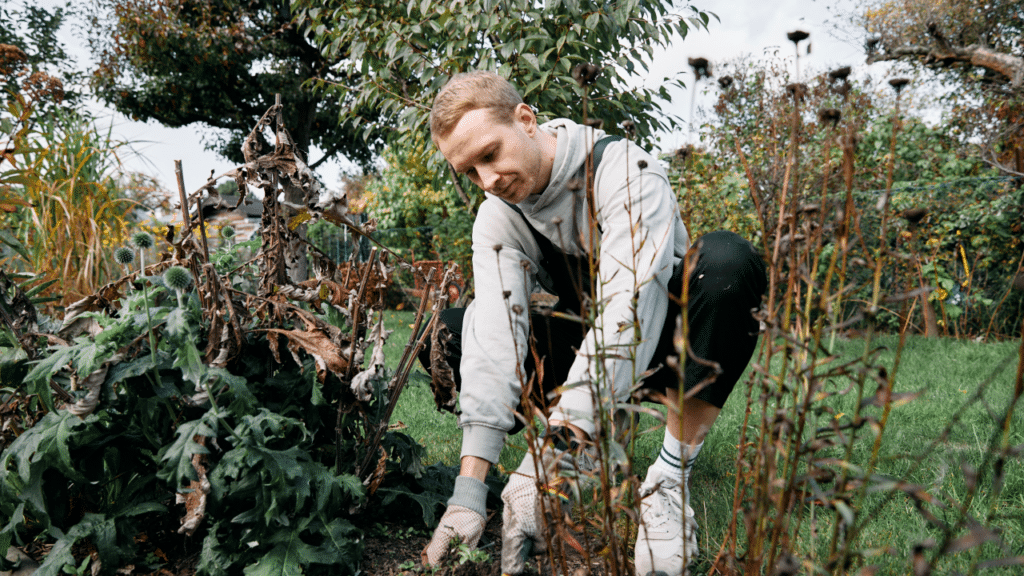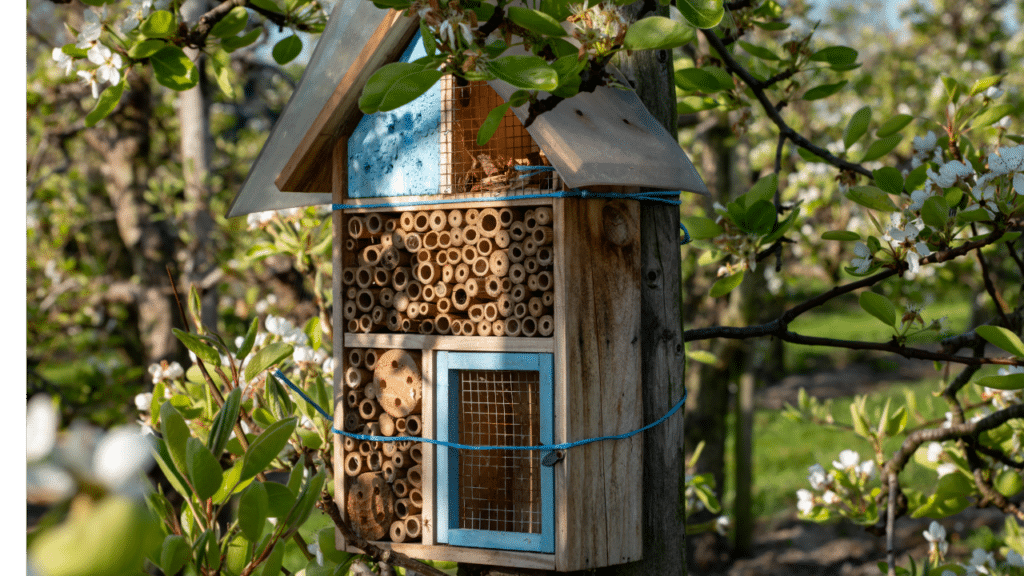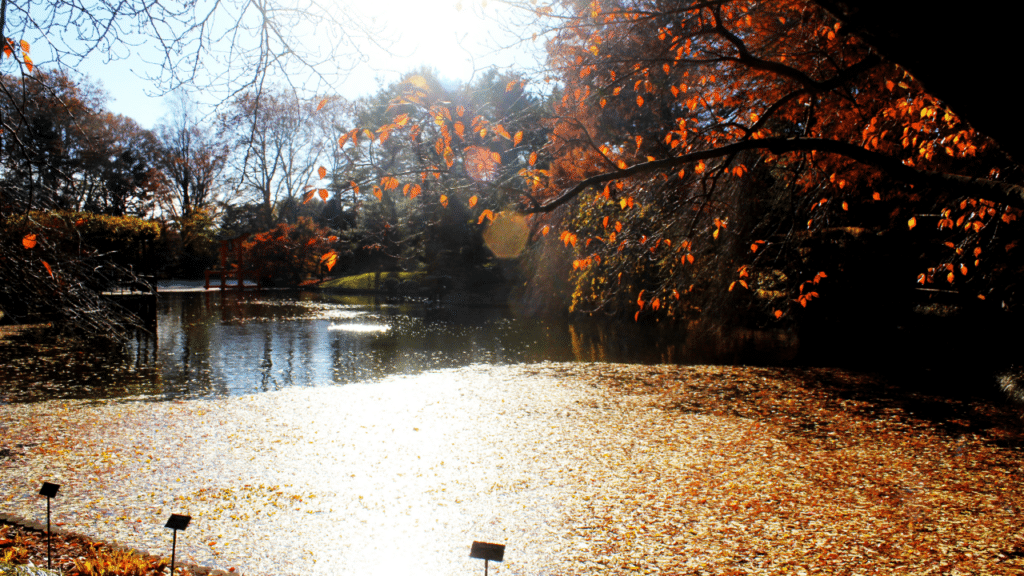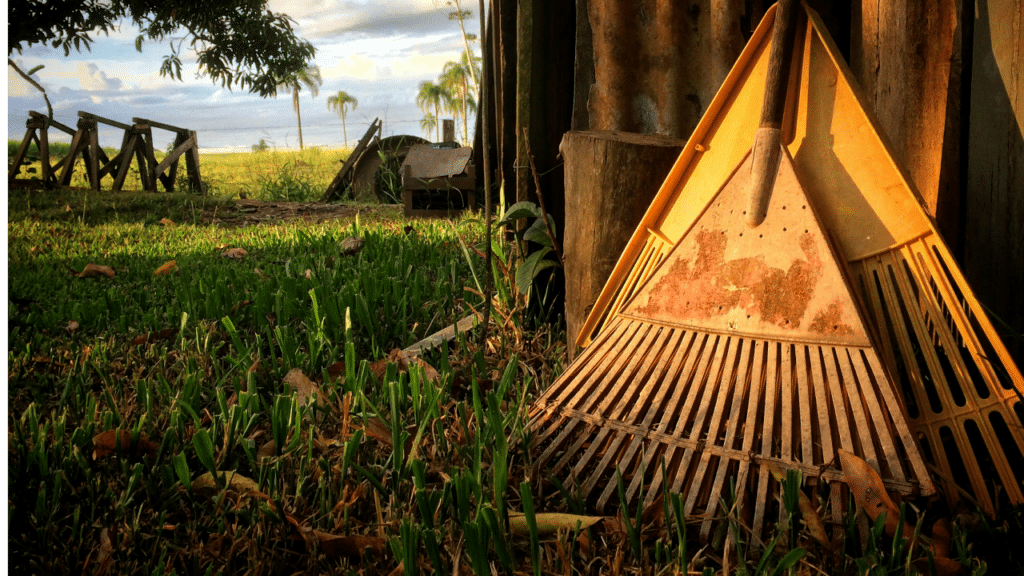As we approach the colder months, preparing your garden for autumn and winter becomes crucial for maintaining its health and ensuring a vibrant spring bloom. With climate change extending the growing season, tasks like lawn mowing and leaf collection may continue later than usual. However, the cold months still bring a natural slowdown, offering the perfect opportunity to tidy up and protect your garden. In this guide, we’ll explore essential garden preparation tips for autumn and winter, helping you keep your outdoor space in top shape year-round.
How to Prepare Your Garden for Autumn and Winter
One of the most important steps for a successful garden transition is learning how to prepare your garden for autumn and winter. As temperatures drop and growth slows, taking stock of your garden’s needs will ensure that you’re ready for the next growing season. This process not only involves cleaning up dead plants but also protecting sensitive species and nourishing the soil.
To Tidy or Not to Tidy, That's the Question
During autumn, many plants, including perennials, die back naturally. So, Should You opt to Tidy Up or Leave the Garden Alone? While it’s tempting to cut away the dead material, leaving certain stems and leaves can protect the plant crown during harsh weather. It also provides a habitat for wildlife. However, striking a balance between tidying and leaving nature to take its course is essential for both the health of your plants and the ecosystem of your garden.
If you’re wondering, “Should I tidy my garden for winter?”, consider these points:
- Keep Weeding: Growth may slow, but keeping weeds in check is still crucial!

- Clear annuals and bedding plants: Remove any dead or finished plants to prevent disease. You might want to let annuals self-seed first.
- Leave herbaceous plants and grasses with attractive forms or seed heads: as well as providing shelter for wildlife, they can add beautiful textures to the Winter Garden, especially during a heavy frost.
- Insect Hotels: Create a space for overwintering invertebrates. This can be as simple as a log or log pile, or a larger structure with slots for bamboo canes, straw, sticks, broken pots, timber with a variety of sized holes drilled.

- Create leaf mulch: Instead of discarding leaves, use them to create leaf mulch. You might want to let annuals self-seed first. A simple DIY cage using wooden stakes and chicken wire can store them as they break down over the next two years.
- Pro Tip for Ponds: To prevent leaves from accumulating in ponds during autumn, consider using a temporary netting. This simple solution can save you from cleaning out heavy leaf fall and helps keep the water clear. Remove the net once the majority of leaves have fallen to keep your pond tidy for winter.

By managing your autumn and winter garden effectively, you create an environment that supports plant health and wildlife over the colder months, and you set the stage for a productive growing season.
Preparing Your Lawn for Autumn and Winter
Preparing your lawn for autumn and winter is another critical step in seasonal garden care. While grass may continue to grow later into the year due to warmer autumns, taking a few extra steps now will ensure a lush, healthy lawn when spring arrives. Consider these key lawncare tips for autumn and winter:
- Rake moss and leaves: Use a spring-tined rake to clear away moss and debris

- Apply a sandy top dressing: This helps improve drainage and soil structure, preventing compaction.
- Aerate your lawn: Use a garden fork to spike holes, particularly near hard landscaping, to promote better water absorption and prevent waterlogging.
- Use an autumn lawn feed: Applying a feed with the right balance of nutrients will strengthen your lawn’s roots and prepare it for the winter months.
For best results, lawn preparation for autumn and winter should be done before the first frost. These simple maintenance tasks can help your lawn endure harsh winter conditions, ensuring a lush and green recovery in spring.
Protecting Tender Plants Over Winter
Tender plants need extra protection as winter approaches. Whether in pots or borders, these plants are vulnerable to frost and freezing temperatures. How to protect tender plants for winter is a frequent question among gardeners, and the answer involves a combination of relocation and covering. Here are some essential tips for protecting your plants over winter:
- Bring pots indoors: Move tender plants in pots to a sheltered area, such as a greenhouse, conservatory, or even a sunny windowsill.
- Lift border plants: If certain tender plants are rooted in your garden, carefully lift them and store them in a frost-free space until spring.
- Use horticultural fleece or mulch: Cover sensitive plants with horticultural fleece or add an extra layer of mulch to provide insulation
By following these steps, you ensure that your plants survive the cold and are ready to thrive again when the weather warms
Composting and Mulching for Autumn and Winter
Autumn is the perfect time to start or refresh your composting efforts. Composting in autumn and winter helps recycle garden waste while enriching your soil with nutrients. Spread a layer of compost or mulch on top of your garden beds and let the worms and microorganisms work it into the soil over the winter months.
Composting tips for autumn:
- Clear out old compost bins: If you have a compost bin or wormery, now is the time to empty and refresh it to make space for new waste.
- Mulch borders: Apply a layer of mulch to garden beds to protect the soil and nourish the plants over winter. Organic mulches like leaf mulch, bark, or homemade compost are ideal.

- Keep feeding the compost: Continue adding vegetable peelings, coffee grounds, and garden clippings to your compost bin throughout winter.
These actions ensure that your garden soil is rich and ready for planting when spring arrives.
Protecting Garden Furniture and Tools for Winter
As winter approaches, it’s time to protect your garden accessories. How to protect garden furniture for winter and care for tools is an important part of garden preparation. Store garden furniture, barbecues, and accessories like cushions in a shed or garage, and make sure to use protective covers to shield any items that must remain outdoors.
For your garden tools:
- Clean and oil tools: Wash tools to remove dirt and rust and apply oil to wooden handles and metal parts to prevent damage.
- Sharpen blades: Keep secateurs, loppers, and shears sharp to make gardening tasks easier in spring.
- Service your lawnmower: Winter is the ideal time to clean and service your mower so it’s ready for action in the spring.
Proper storage and maintenance extend the life of your tools and furniture, saving you money in the long run.
Planning Your Garden for the Next Year
While the cold months may limit your time outside, they’re perfect for planning. Use the downtime to reflect on this year’s successes and plan new projects for the spring. How to plan your garden for next year is a rewarding task that can include sketching layouts, choosing plants, and ordering seeds.
Ideas for winter garden planning:
- Set up a Pinterest board: Collect inspirational ideas and designs for next year’s garden. You might find it cathartic to set up a Pinterest Board where you can save all your inspirational ideas!
- Make a wish list: Start a list of seeds, plants, and tools you’ll need for your projects.
- Consider winter interest: Think about adding plants that provide winter colour or food for wildlife, like Hamamelis (Witch Hazel) for its vibrant flowers and fragrance.

This planning stage ensures that you’re ready to hit the ground running once spring arrives.
Garden preparation for autumn and winter is more than just a seasonal chore. It’s an essential practice that protects your garden, encourages wildlife, and sets the stage for a beautiful spring. By following these tips and best practices, you’ll ensure that your garden remains healthy and ready to bloom when the warmer months return.
Ready to take your design skills to the next level?
Explore our wide range of accredited garden design courses today, including an Online Short Course in Design for Small Garden Spaces, a Diploma in Professional Garden Design plus a BA (Hons) in Design for Outdoor Living. Whether you are looking to deepen your knowledge or gain new industry insights, our programs empower you to create stunning, functional spaces that your clients will love!
At NDA, flexibility is key. You can study at a time that suits you, making it easier to fit your education around your lifestyle and everyday commitments. We also offer affordable tuition without compromising on quality, and our experienced tutors provide personalised support to guide you through every step of your studies. Plus, with clear progression pathways, you can easily advance from a diploma to a degree and even a master’s program, all within a supportive learning environment.
Our courses meet the highest academic standards, with diplomas accredited by AIM Qualifications Awards and degrees validated by partners like De Montfort University, Leicester. This ensures your qualification is recognised globally and opens doors to future academic and professional opportunities
Start Your Design Journey Today
At NDA, we believe education should inspire and transform lives.
Join us to discover how studying with NDA offers a unique and transformative opportunity in the world of design education.

